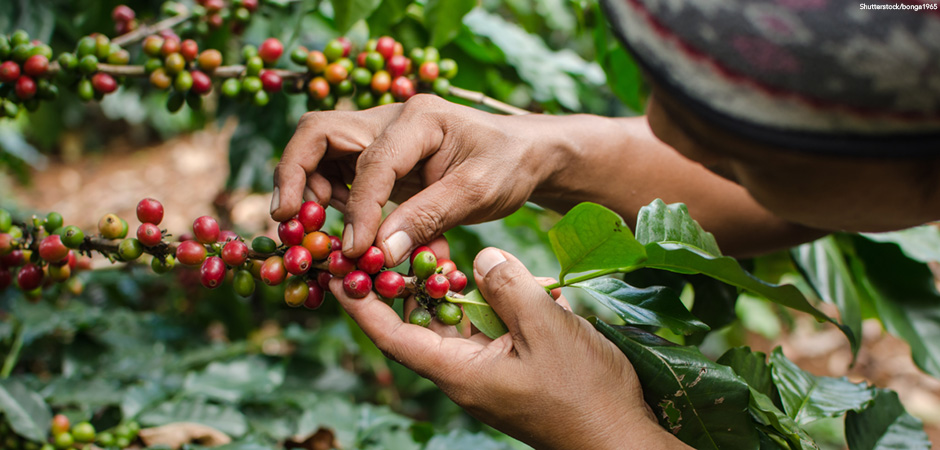
Coffee is one of the most popular drinks in the world. Only water and tea are drunk more than coffee. This means that the demand for coffee is high. In Mozambique, the Gorongosa Coffee Project uses the demand for coffee to benefit the people and the environment.
Creating a Park
In 1960, the government of Mozambique created Gorongosa National Park by adding land to an existing hunting and nature reserve, or a place set aside for wildlife. People from around the world visited the park to see its beautiful surroundings and the wildlife, including lions and elephants. Tourism became a big part of the economy in Mozambique. Tourists needed hotels, restaurants, and guides to lead tours of the park. The tourism industry helped create jobs and bring money to the area. But in the late 1970s, a civil war began that lasted 15 years.
Widespread Destruction
The long war hurt the Gorongosa National Park and the nation’s economy. Visitors could no longer come to the park, and many people lost their jobs. More than 200,000 people lived in and around the park. To make money, people took advantage of the park’s valuable resources. The people and the military cut down and sold trees for lumber. Thousands of animals were killed for food. Parts of other animals, such as elephant and rhino tusks, were sold for a lot of money. By the end of the war, Gorongosa had lost more than 95 percent of its animals.
During and after the war, most people living in and around the park were subsistence farmers, or farmers who grew just enough to eat with little left to sell. They also farmed in ways that damaged the environment. Farmers cut down trees and burned the area to prepare the land for planting crops. Farming land that is prepared in this way can only grow food for a few years. Farmers then moved to another area of the park to clear and burn more land to plant crops.
Mount Gorongosa
The rainforests on Mount Gorongosa, a mountain inside Gorongosa National Park, were almost destroyed by the war, logging, and these farming practices. Almost 40 percent of the rainforest was cleared in the last 50 years. The loss of the rainforest affects the whole park. The mountain and the rainforest combine to create moisture. Rain falls on the mountain even when the rest of the park is dry. The rain collects in catchments, or low areas of land, where it slowly drains to other areas of the park. The water is necessary for the survival of the people and the animals in the park. A stable water supply is essential during the dry season when the rest of the park does not have rain for nearly six months.
Gorongosa Coffee Project
Since 2004 the government, with outside help, has been restoring the park. Because of these restoration efforts, there are now more than 90,000 animals in the park. But the rainforest on Mount Gorongosa is still struggling, and park workers enlisted the people who live in the community to help. People needed ways to earn an income that would not hurt the environment. The Gorongosa Coffee Project began in 2013 to provide people with a steady income and to teach sustainable farming practices.

The project started with ten families who were given coffee plants and taught how to grow and harvest the beans. However, the coffee plants needed shade, so park workers also gave the farmers seeds for trees that grow in the rainforest. Farmers planted the trees beside the coffee plants. The trees shaded the coffee plants and replaced some of the trees that were destroyed in the rainforest. After the first crop of coffee sold for a profit, more people in the community wanted to farm coffee. After the farmers harvest the coffee beans, they sell the beans back to the project. The project then employs other local people to roast, grind, and package the coffee, which is sold throughout Mozambique and exported to neighboring countries. In the first ten years of the project, farmers have grown 800,000 coffee plants and planted 20,000 native trees each year. Repopulating the rainforest helps keep a stable water supply throughout the park for the people and animals.
Economic Impact
Around 1,000 families currently work on the Gorongosa Coffee Project. The income earned from coffee helps some people invest in better education for their children and improved housing. Profits from coffee sales are also used to improve the park and to build roads, hospitals, and schools. The project would like to help other African countries grow their economies and start their own coffee projects.
